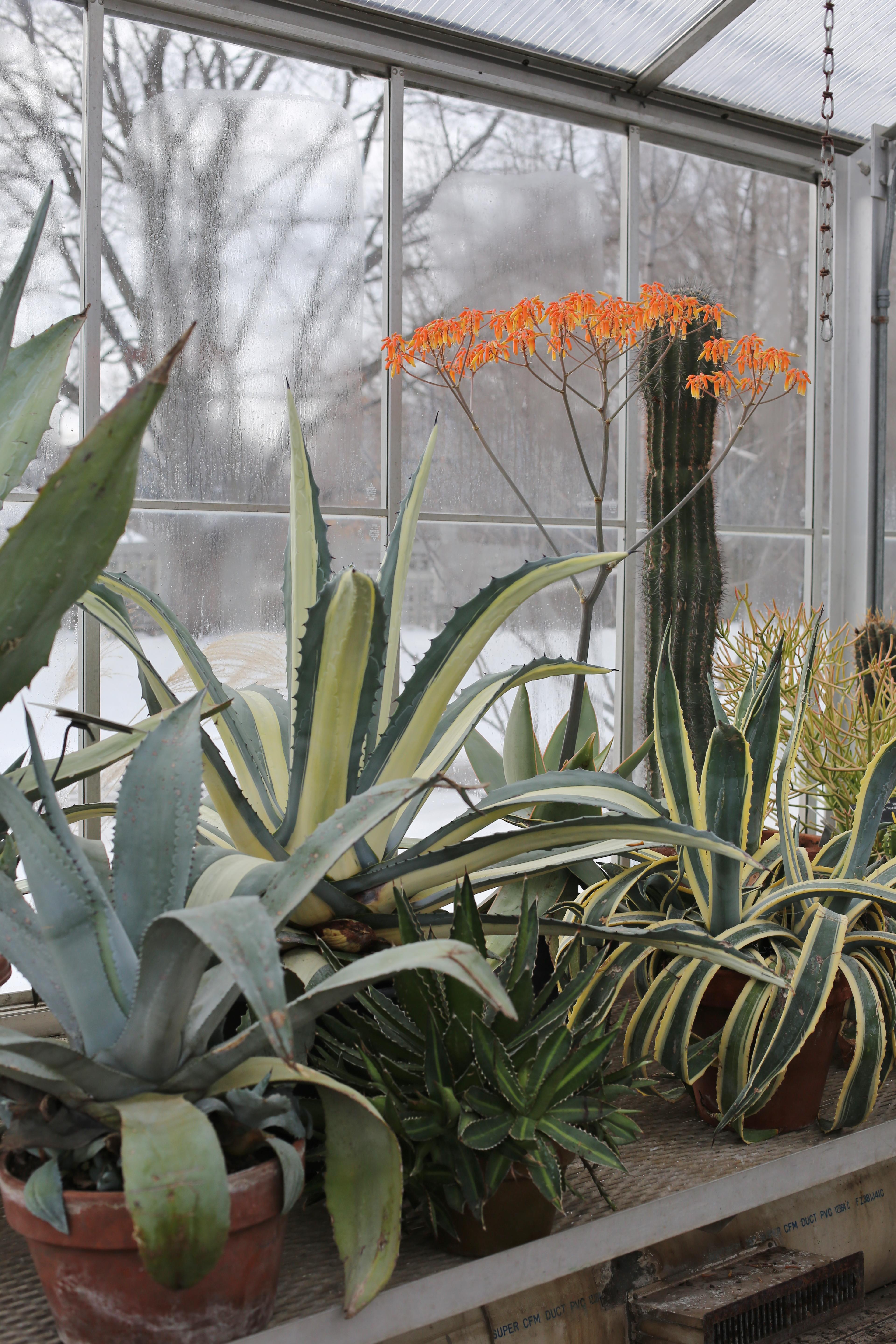6 things to do to your houseplants in November to prepare them for winter - and 4 things to never do
For flourishing foliage come spring, you'll need to adjust how you care for your houseplants as they enter dormancy


With summer well and truly in the rearview, your houseplants might be the last thing on your mind (unless, of course, we're talking poinsettias). We'd forgive you for thinking you can now slow down your plant care routine, throw caution to the wind, and more or less abandon your green-fronded friends until the spring, but they most certainly won't. It may come as a surprise, but your houseplants actually demand as much attention this time of the year as any other.
If you're already a dab hand at decorating with houseplants, you'll know that most greenery enters a period of dormancy during winter. Cooler temperatures and lower light levels mean they slow their growing process or stop completely in response to their changing environment. While there might not be much going on on the surface, your plants will still need adequate care, but your summer plant care routine will take some adjusting. For healthy, flourishing foliage once warmer weather returns, here's what you need to know.
1. Increase light

Daylight saving doesn't just hit us hard, it affects your houseplants, too. While there are some houseplants that can tolerate low light, most will need to be moved to a brighter spot this time of year.
'In the fall, the days are shorter and the angle of the sun is changing,' explains Paris Lalicata, plant expert at The Sill. 'Some of your houseplants might need to sit in a new place to get a comparable amount of sunlight as they did in spring and summer, so consider moving your plants into a window if they aren't in one already.'
Ren Lenhof, a houseplant expert and blogger at House Fur, points out that you can always use an artificial light source, too. 'If natural light is scarce, consider investing
in grow lights to keep your green buddies happy,' she says. We love this small tabletop grow lamp from Walmart for individual plants, or you could try a larger grow frame, like this one from The Sill.
2. Monitor your watering
How often you should water your houseplants largely depends on the warmth of your current climate and since temperatures drop this time of year, you'll need to adjust your watering schedule accordingly.
'You might find yourself needing to water less often as the days get shorter, but those that are closer to heating units or in dry rooms may need to be watered at a similar frequency as summer,' Paris explains. 'Be sure to monitor your plants closely during this time of adjustment, and check the moisture of the soil. Also look out for physical signs like wilting, leaf curl, and wrinkling.'
The Livingetc newsletters are your inside source for what’s shaping interiors now - and what’s next. Discover trend forecasts, smart style ideas, and curated shopping inspiration that brings design to life. Subscribe today and stay ahead of the curve.
The best way to find out if your plants need a water is by doing a soil test. 'Check the soil moisture by sticking your finger about an inch deep,' advises Ren. 'If it's dry, it's time for a drink, but if it's still moist, hold off on watering. Also, remember to use room-temperature water to avoid shocking your plants.'
3. Boost humidity

Chapped lips and dry hands are a common problem for many of us this time of year as the environment is far less humid. Our houseplants are also impacted by the change in humidity levels, so you might want to supplement it with regular misting or by using a humidifier.
'As temperatures drop our heaters kick on which sucks out the moisture from the air,' says Paris. 'Considering most of our plants are tropical, it'll be best to boost humidity with a humidifier if the air gets too dry.' You could always move your plants to a steamier spot in your home like the bathroom. The best houseplants for bathrooms will always be the humidity-loving kind.
5. Dust your leaves
Now we know nobody wants to add more dusting chores to their cleaning routine, but giving your plants' leaves a good wipe is a must if you want them to look their best. This is especially important for houseplants with leaves that have a large surface area, such as the monstera.
Why dust your houseplants' leaves, I hear you ask. 'A layer of dust can block sunlight absorption, hindering your plant's growth,' Ren notes. 'Gently wipe the leaves with a damp cloth or give them a light shower if your plant tolerates it.' You can also get some nifty dusting gloves from Amazon that make polishing your leaves super easy.
6. Prune dead leaves or stems

The best houseplants for beginners are slow growers that don't become too unruly, but even the likes of succulents will need a prune every now and then. While you might think this is a job for the summer, getting rid of wilting or dead leaves or damaged stems during the month of November can help conserve your plants' energy over winter.
'Prune away any dead or yellowing leaves, and tidy up your plant's appearance,' Ren says. 'This not only keeps them looking spiffy but also reduces the risk of pests and diseases during their dormant phase.'
What to avoid
There's plenty to remember when it comes to houseplant care, but there are also some key things to avoid, too, if you want your favorite greenery to survive the winter. Here's what you need to steer clear of.
1. Placing plants in front of heaters

You won't have to worry about ensuring your houseplants survive a heatwave this time of year, but you do need to pay attention to artificial heat sources. Turning on the heating might offer you instant comfort, but the same can't be said for those houseplants on the windowsill above your radiator.
'In an effort to keep plants warm this time of year, placing your plants in front of heaters will actually do more harm than good,' says Paris. 'It's best to maintain a stable environment for your houseplants and avoid any hot drafts from directly hitting the foliage.'
The same goes for drafty windows or doors, too. 'Heaters will dry out and possibly burn your plants, but any sudden temperature fluctuations can shock your plants and make them unhappy campers,' Ren explains.
2. Overfertilizing
Whether you fertilize your houseplants naturally or you opt for a store-bought liquid feeder, you'll want to hold off giving your plants any added nutrients this time of year. It might seem counterintuitive, but this is one of the bigger houseplant mistakes you can make. Since your plants aren't growing, they won't need any extra feed, so anything you do give them will just sit in the soil and eventually burn their roots (which could be fatal to your plant).
'If your plants are actively growing in bright light or grown under grow lights year round you can fertilize still, but usually for those that are not growing or receiving bright light you should forgo fertilizer use during this time of year,' Paris adds.
3. Repotting

Repotting is a key part of any plant care routine to ensure they don't become root-bound and to give them plenty of space to grow. There's a time and place for doing so, however, and November isn't it. 'Avoid repotting your plants during this time,' Ren says. 'They're going into a resting phase, and disturbing their roots can stress them out.'
4. Leaving your plants outside
Some of us have a climate that allows us to keep the likes of succulents, Boston ferns, and even peace lilies outside during summer. Likewise, you might consider overwintering your not-so-hardy outdoor plants by bringing them indoors, but don't forget to bring any houseplants you kept outside during summer back into your home, either.
'Most houseplants are tropical, meaning most want to be exposed to warm temperatures consistently,' Paris explains. 'It'll be ideal to start bringing your plants back indoors if the temperatures are dropping below 60 degrees day/night. There may be some exceptions so be sure to do the research to see your plants' cold hardiness.'
Houseplant care might involve more rules than you anticipated, but once you've got the basics under your belt, the rest is a walk in the park. Take heed of this plant care advise ahead of winter and you'll have a beautiful display of healthy, vibrant foliage once the joys of spring arrive!

Lilith Hudson is a freelance writer and regular contributor to Livingetc. She holds an MA in Magazine Journalism from City, University of London, and has written for various titles including Homes & Gardens, House Beautiful, Advnture, the Saturday Times Magazine, Evening Standard, DJ Mag, Metro, and The Simple Things Magazine.
Prior to going freelance, Lilith was the News and Trends Editor at Livingetc. It was a role that helped her develop a keen eye for spotting all the latest micro-trends, interior hacks, and viral decor must-haves you need in your home. With a constant ear to the ground on the design scene, she's ahead of the curve when it comes to the latest color that's sweeping interiors or the hot new style to decorate our homes.


